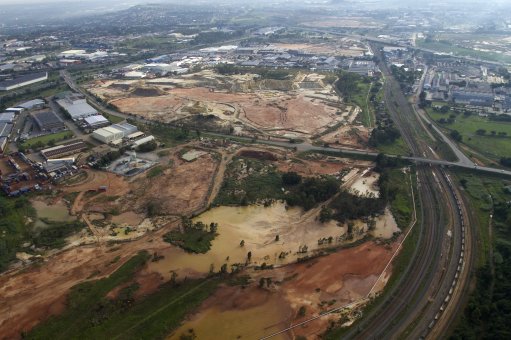
AFRICA DEVELOPMENT
29% of new mining projects announced in 2013 were in Africa
Photo by: Bloomberg
Last year saw a decline in the number of new mining projects worldwide, with Africa contributing 29% of the total, although these projects were small, on average, compared with the global norm, says global financial information provider SNL Metals & Mining (SNL).
In its ‘State of the market report’, released in April, SNL states that there were only 95 new mining projects worldwide in 2013, with a total expected capital expenditure (capex) of $38-billion, compared with the peak year of 2010, when there were 167 projects valued at $115-billion.
SNL reports director Dr Chris Hinde states that, by the end of 2013, the company’s database contained 1 307 projects where a development investment has been published.
“Although Africa's share of these new advanced projects held up well, with 19 projects of the global total being from the continent. . . the projects were relatively small and the overall capex and net profit value forecasts were dwarfed by project announcements in North America,” he explains.
Hinde adds that several prefeasibility and full feasibility studies were announced for African projects during 2013 and the first three months of this year, with an average of almost six new projects being announced each quarter.
He elaborates that, by the end of 2013, development projects in Africa accounted for total capex commitments of $110-billion – i.e. about 14% of the global amount – compared with $106-billion, which was also 14%, in 2012.
These African projects include 26 that have a capex commitment of more than $1-billion.
New Projects
Toronto-based Allana Potash also announced a feasibility study for a one-million-ton-a-year mine to produce standard-grade muriate of potash over an operating life of 25 years at a capital cost of $642-million, in Ethiopia.
Mining company GoviEx Uranium announced proposals for a surface and underground mine at Madaouela, near Arlit, in Niger. Prefeasibility studies indicate an operation costing $646-million.
“In November 2013, Cominco Resources announced that it aimed to bring the world's tenth-largest phosphate project into production later this year. The prefeasibility study confirmed the economic and technical merit of a mine capable of producing and exporting four-million tons a year, of which 32% will be phosrock concentrate, from the Hinda deposit, in the Republic of the Congo,” he details.
In January this year, copper producer Tiger Resources announced updated economics for Stage 2 expansion at the Kipoi copper project in the Democratic Republic of Congo. Following a 112% increase in its ore reserve, the revised study indicated a net present value of $755-million, which is twice that of the original feasibility study, for the production of 532 000 t of copper cathode over 11 years - a 41% increase.
The Stage 1 heavy media separation plant is expected to produce 39 000 t of copper in concentrate at a direct cash operating cost of $0.30/lb this year.
Moreover, at the end of January, iron producer Kogi Iron published a prefeasibility study for a five-million-ton-a year openpit iron-ore mine at its Agbaja project in Nigeria. In March, the company announced a probable ore reserve of 205-million tons at 45.7% iron, Hinde concludes.